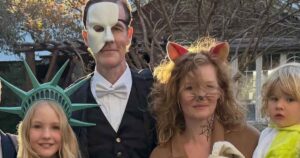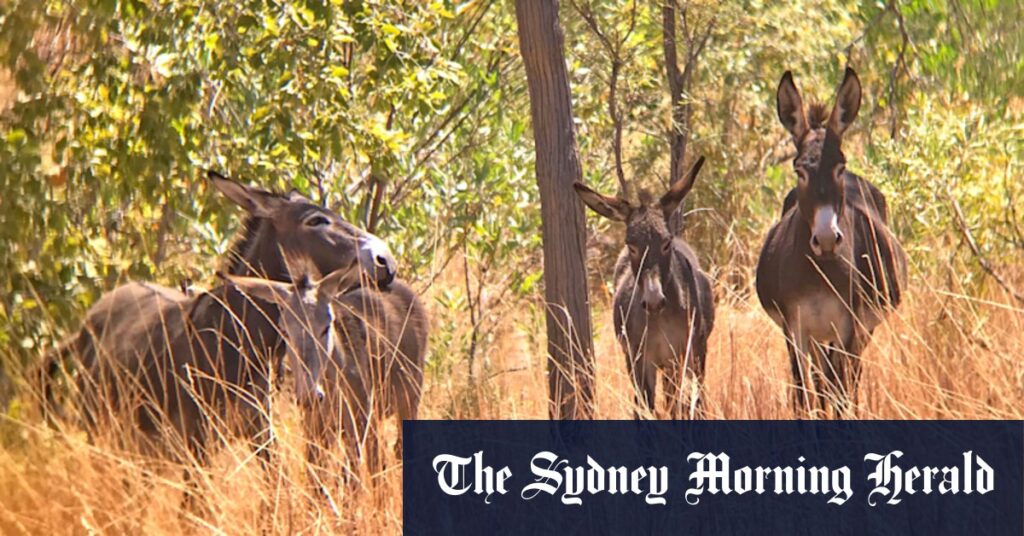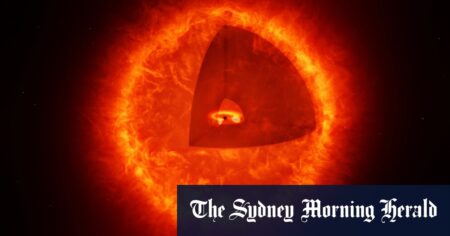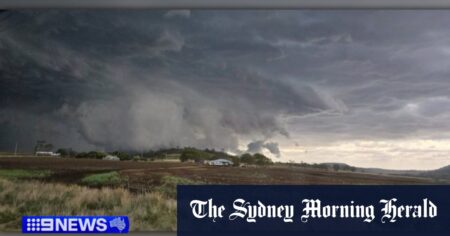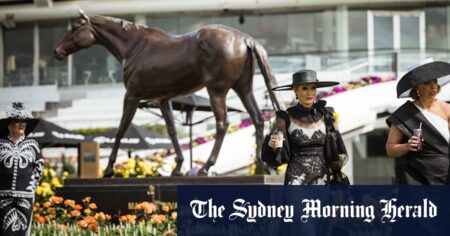Kachana runs only a few hundred-head of cattle and is located 120 kilometres south-west of Kununurra near the Northern Territory border.
The lease was granted to family patriarch Chris Henggeler – who was born in Africa and educated in Switzerland – in 1989 as a degrading parcel of land that previously made up the southern section of El Questro Station, which is now well-known for its tourist resort and waterfalls.
Kachana Station owner Chris Henggler with a pack donkey. Credit: Facebook
Only 30 per cent of Kachana is marginal cattle grazing country while the rest of the lease is made up of rocky ranges and plateaus covered with spinifex grasses.
The Henggelers said the donkeys are an “integral part” of their management strategy for the environment and claim that with climate change having an impact on rising bushfires in the far north of WA, this was a strategic way to reduce fuel loads.
“We realise that we are to blame and we can continue to be part of the problem, or we can be part of the solution and the animals that we brought in could also be part of the solution,” Chris said in Without a Voice, The eradication of Australia’s wild donkeys, a documentary on the issue.
“It doesn’t make sense to take a feral camel, donkey or a horse and kill them simply because they’re misbehaving. Why not modify their behaviour and let them become part of the solution because what the country’s telling me is we need more herbivores to cycle the vegetation, put it back into the ground, encourage the soil building so that we can sustain life.”

Kachana Station is located in the Durack Range in the East Kimberley.Credit: Kachana Station
Part of their land management model includes keeping a group of wild donkeys within a 20 square kilometre patch – equivalent to 2.6 per cent of the lease – in an area where the cattle won’t run but would otherwise be ripe for bushfires.
The Henggelers say they shoot any donkey which leaves the valley and might wander off to neighbouring properties but do not have a fence that could keep them on Kachana. The family estimates the valley could handle the nutritional needs of about 120 to 150 donkeys.
That bushfires are an ever-increasing issue through the dry season has been proven after the Department of Fire and Emergency Services stated this year was “one of the toughest on record”.
To date, a total of 2.7 million hectares of land has been burnt across the Kimberley this year alone.
But despite their best efforts, the Henggelers’ bid to keep the donkeys alive was in vain and the Tribunal ruled to uphold the control notice because they believed the station owners were not sufficiently managing the distribution and spread of the feral donkey population.
“The targeted patrolling of the controlled management zone approximately every 90 days is not sufficient … Nor are we satisfied that Robert’s incidental observations of the Station and, in particular, the controlled management zone, at other times is sufficient for us to be satisfied that the Applicant is effectively controlling the risk of donkeys exiting the home range,” the Tribunal documents stated.
While the family had culled 125 donkeys between 2018 and 2023 that had strayed from a project area, the Tribunal found it was not enough.
“The Applicant’s culling of an average of 21 donkeys a year is not aggressive enough to manage the donkey population in a manner that complies with the purpose and intent of the BAM Act [Biosecurity and Agriculture Management Act],” the Tribunal decision stated.
Loading
Donkey culling programs in the Kimberley go back to 1980. In the last 45 years almost 600,000 donkeys have been killed as part of the ‘Large Feral Herbivore’ strategy, at a cost of more than $8 million to both property owners and the state government, SAT documents stated.
But new methods of farming are now scrutinising the practice, with some believing that culling non-native animals such as horses and donkeys is doing more harm than good.
The Tribunal noted in its findings that these new approaches should be explored, stating that “land management practices have moved on since 1978, when the donkey culling program in the Kimberley region commenced” and suggested that a more analytical approach to research in this area may yield change.
Read the full article here


